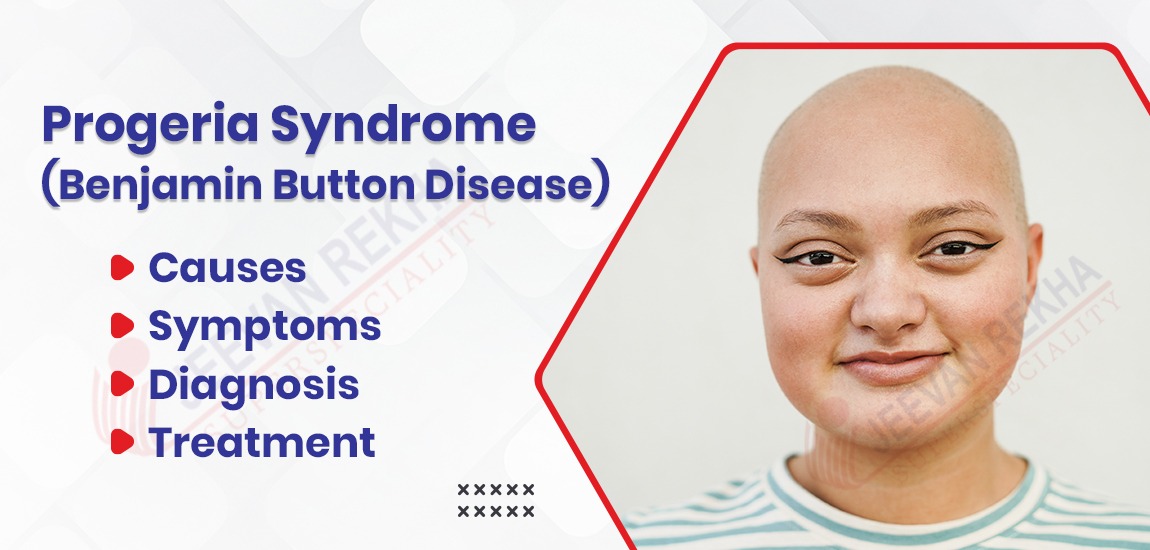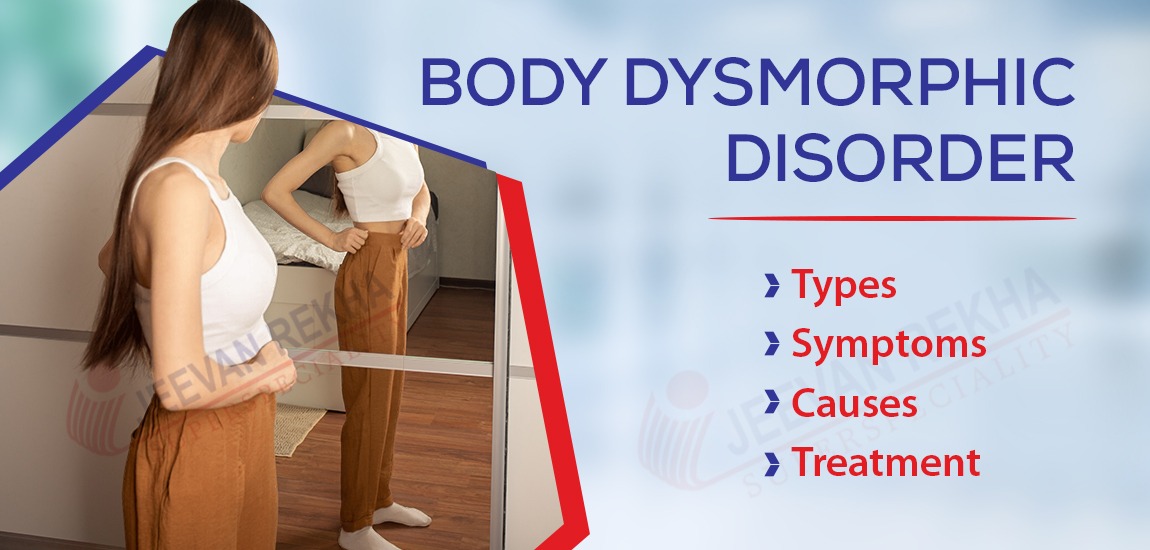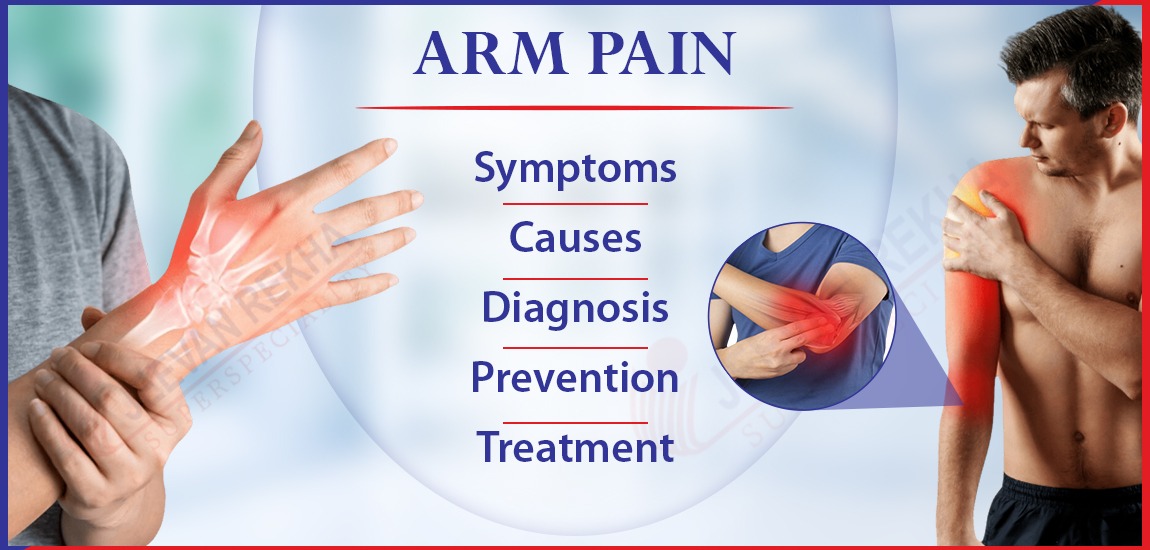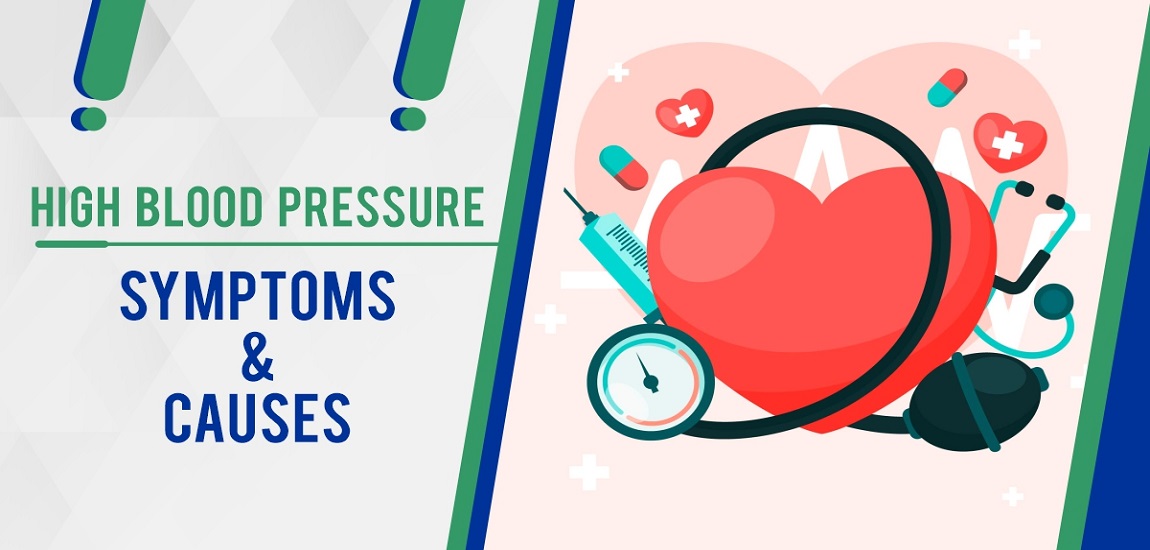
- By JRSH Admin
- In Health and Tips,
- Posted April 29, 2023
Progeria Syndrome (Benjamin Button Disease): Causes, Symptoms, Diagnosis, and Treatment
What is Progeria Syndrome?
Hutchinson-Gilford progeria syndrome (HGPS), also known as the "Benjamin Button" disease (after the short story and movie "The Curious Case of Benjamin Button"), is another name for progeria. It is a rare genetic disorder that causes a child's body to age quickly. Progeria is brought on by a mutation in the LMNA gene.
Most progerian children die before they turn 13 years old. People of all sexes and races are equally affected by the illness. It affects about 1 in every 4 million newborns worldwide.
A specific gene produces an abnormal protein as a result of a single error. When cells utilize this protein, known as progerin, they degrade more quickly. As a result, progerian children age rapidly.
Types of Progeria Syndrome
Progeria syndrome comes in three different forms:
- Hutchinson-Gilford Syndrome is the most prevalent form of progeria syndrome. It is a fatal disorder that is extremely rare.
- The Wiedemann-Rautenstrauch Syndrome, which affects children while they are still in utero, is the second type of progeria syndrome.
- Werner Syndrome, the adult form of the illness, is the third progeria syndrome subtype. Teenagers are most often affected by this type, and those who have it can live for 40 to 50 years.
What are the Symptoms of Progeria Syndrome?
A progeriatic child's growth typically slows significantly during the first year of life, but their motor skills and intelligence are unaffected.
A distinctive appearance is one of the symptoms of this progressive disorder:
- Below-average weight and height, and sluggish growth
- Thin lips, a beaked nose, a small lower jaw, and a slender face
- Unreasonably large head compared to face
- Large eyes and a lack of complete eyelid closure
- Loss of hair, including on the eyebrows and eyelashes
- Skin that is spotted, spotty, and aged
- Clear veins
- Voice with high pitch
Furthermore, health problems are signs and symptoms:
- Heart and blood vessel (cardiovascular) disease that is very severe and progresses
- Skin tightening and hardening on the trunk and extremities (similar to scleroderma)
- Delayed and atypical tooth development
- A little hearing loss
- A reduction in muscle mass and a loss of subcutaneous fat
- Bone fragility and skeletal abnormalities
- Rigid joints
- A dislocated hip
- Insulin sensitivity
Causes of Progeria Syndrome
Progeria is a hereditary condition brought on by an LMNA gene mutation. A protein called lamin A is produced by the LMNA gene.
The structural scaffolding that holds the nucleus of each cell in your body together is made up in large part of lamin A.
A small mutation in the LMNA gene results in the production of progerin, an atypical form of the lamin A protein. Your cells' nuclei become unstable as a result of progerin replacing lamin A, gradually becoming damaged. Premature aging is brought on by the early death of every cell in your body as a result of this.
Risk factors of Progeria Syndrome
There are currently no known risk factors for progeria.
Progeria is not a family-inherited condition, unlike many other genetic disorders. Accordingly, the gene mutation in the child's genes is new and neither of the child's parents carries it. The gene mutation is a chance occurrence, according to researchers, and it happens in just one sperm or egg before conception.
It is crucial to understand that merely having a risk factor does not guarantee that one will develop the condition. A risk factor raises one's likelihood of developing a condition in comparison to someone without the risk factor. Some risk factors are more crucial than others.
Furthermore, the absence of a risk factor does not guarantee that a person won't develop the condition. It is crucial to always go over risk factor effects with your healthcare provider.
Complications of Progeria Syndrome
The majority of progeroid children experience severe atherosclerosis or artery hardening. This is a condition where the artery walls stiffen and thicken, frequently limiting blood flow. Arteries are blood vessels that transport nutrients and oxygen from the heart to the rest of the body.
Most progeroid children pass away from complications associated with atherosclerosis, such as:
- Cardiovascular issues affect the blood vessels that supply the heart, causing heart attacks and congestive heart failure.
- Cerebrovascular issues, which cause strokes, affect the blood vessels that supply the brain.
- Progeria typically does not progress to other health issues that are frequently linked to aging, such as arthritis, cataracts, or an increased risk of developing cancer.
How is progeria diagnosed?
A diagnosis of Progeria may involve:
- An examination of the physical and medical history of the patient is necessary to diagnose progeria. The most common symptoms are the inability to grow and loss of hair.
- Physicians may order genetic testing for LMNA mutations to confirm the diagnosis. The diagnosis is confirmed if the LMNA gene has a mutation.
- It may be necessary to order a cardiac stress test after the diagnosis has been confirmed. The results of this test may reveal symptoms of atherosclerosis, allowing physicians to prescribe medications or find other solutions to prevent early death.
- Many clinical conditions may present with similar signs and symptoms. Several additional tests may be ordered to rule out other clinical conditions before a definitive diagnosis can be made.
How is progeria treated?
Progeria is currently untreatable, but researchers are working to find a cure. In one clinical trial, a class of cancer medication called FTIs (farnesyltransferase inhibitors) is being examined to see if it can help slow the disease.
Some of the disease's symptoms can be mitigated or delayed with the aid of treatments.
- Medication and diet changes. To lower cholesterol or prevent blood clots, your child's doctor may prescribe drugs and make changes to his or her diet. Aspirin can help prevent heart attacks and strokes when taken every day at a low dose. Height and weight can be built with growth hormones. The FDA has approved lonafarnib (Zokinvy) to prevent the accumulation of faulty progerin, which may damage the heart.
- Physical and occupational therapy. If your child has tight joints or hip difficulties, physical and occupational therapy might help them stay active.
- Surgery. To stop the progression of heart disease, some kids may undergo coronary bypass surgery or an angioplasty.
- At home. Children with progeria are more likely to become dehydrated, so they should drink a lot of water, especially when they're feeling under the weather or contagious. They may eat enough if they eat smaller meals more frequently. Your child may feel less discomfort and be inspired to play and stay active by wearing cushioned shoes or inserts.
- Sunscreen. Use a broad-spectrum sunblock with a minimum SPF of 15. Apply it again after every two hours, or sooner if your child is swimming or perspiring.
Tags
Blog Search
Latest Posts
-
Ear Infections (Otitis Media): Top Triggers & How to Avoid Them?
April 11, 2025 -
Implantation Bleeding Vs Periods: Know the Difference
March 12, 2025 -
5 Tips for a Happy and Healthy Summer
February 27, 2025 -
Body Ache (Pain): Causes, Symptoms and Treatment Options
February 10, 2025 -
Fatigue and Exhaustion: Causes, Symptoms, and Treatment
January 08, 2025




